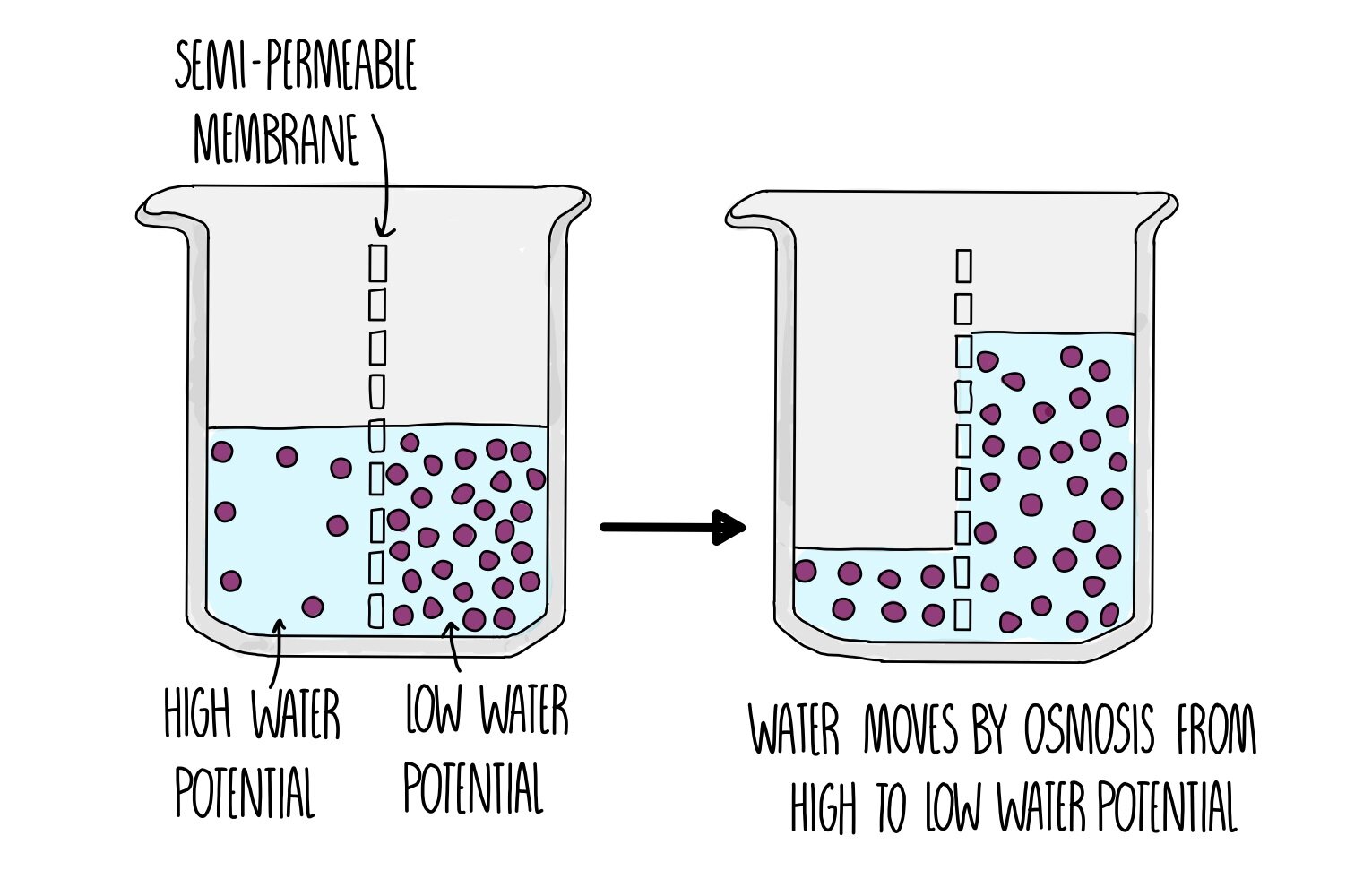Movement across cell membranes
The cell membrane controls the movement of substances into and out of cells. Substances can move across the membrane by diffusion, osmosis and active transport.
Diffusion
Movement from a region of high concentration to a region of low concentration (down a concentration gradient).
Passive process — it does not require energy.
It is responsible for gas exchange in our lungs. Oxygen diffuses from the alveoli and into the bloodstream, and carbon dioxide diffuses in the opposite direction.
Osmosis
Osmosis is the diffusion of water molecules from high to low concentration, down a concentration gradient, through a partially permeable membrane.
When the concentration of water is the same on each side, the movement of water will be the same on each side (so the net exchange of water is zero).
Osmosis in plant cells
If plant cells are placed in dilute solution, the water potential is higher in the solution compared to the cell cytoplasm. Water moves into the cell by osmosis, causing the cytoplasm to push up against the cell wall. The cell becomes turgid. The strong cell wall protects the plant cell from bursting.
When plant cells are placed in concentrated solution, the water potential is higher inside the cell compared to the solution. Water moves by osmosis from the cell cytoplasm to the solution, causing the cytoplasm to lose volume and pull away from the cell wall (plasmolysis). The cell becomes flaccid and the plant will wilt.
However, if animal cells (such as red blood cells) are placed in a dilute solution, water moves into the cell by osmosis and the cell will burst. Animal cells have no cell wall to protect them and the cell membrane is not strong enough to withstand the high pressure from the extra water inside the cell. If animal cells are placed in concentrated solution, they lose water by osmosis and become crenated (wrinkled).
Active transport
Active transport is the movement of molecules from low to high concentration, against a concentration gradient.
This process requires energy.
Carrier proteins pick up specific molecules and take them through the cell membrane against the concentration gradient.
Examples include glucose uptake by epithelial cells in the villi of the small intestine and the uptake of mineral ions by the root hair cells.


